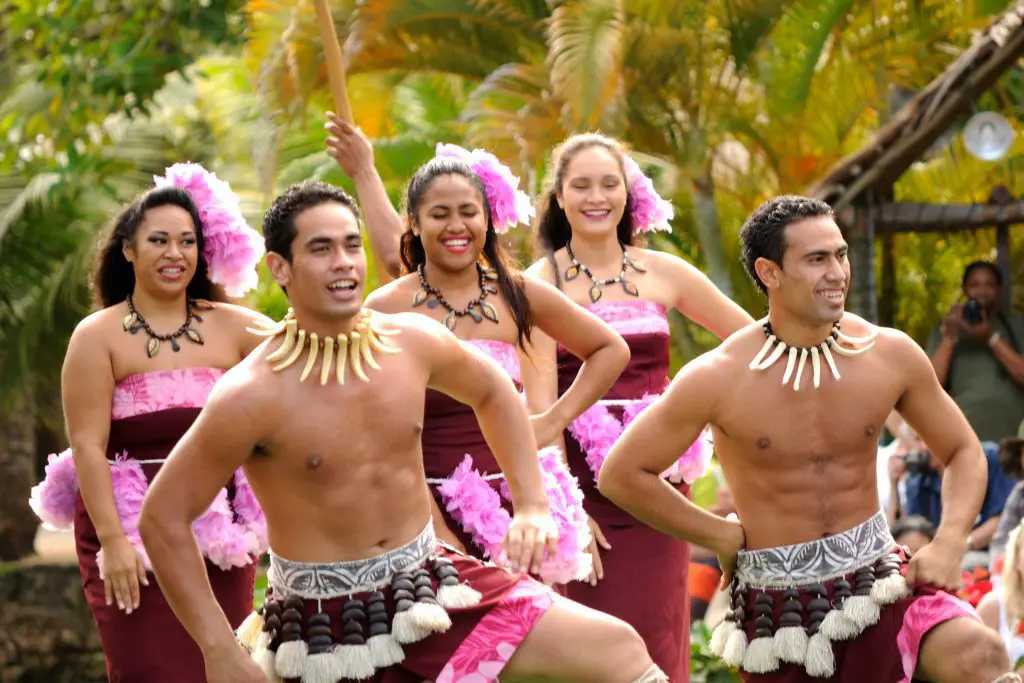Inhabitants of the islands in the Polynesian Triangle in Oceania’s Pacific Ocean, the Polynesians are a linguistic and culturally cohesive people group.
Due to their reputation as navigators and adventurers, they have been established in New Zealand, the US, and France, despite their Taiwanese background.
Polynesians live worldwide, but Samoa, Niue, the Cook Islands, Tonga, and Tuvalu are sovereign nations. Roughly two million people call themselves Polynesians.
Many Polynesians, especially those over the age of 15, struggle with obesity, which often sparks outsiders’ interest in the people of Polynesia.
What Contributes to Polynesian Size
Despite their relative obscurity, the Polynesians’ size has drawn notice. Many well-known figures from a wide range of areas are Polynesian, however.
Several possibilities exist for explaining the Polynesian people’s disproportionately large bodies:
Migration and Origin
The factors contributing to Polynesians’ higher stature are complex. But their histories as migrants and natives provide clues to some potential causes.
Polynesians likely arrived in Taiwan, Southeast Asia, and subsequently migrated over the Pacific Islands over millennia.
During their migration, the Polynesians’ extensive ocean voyages required great grit and stamina. Those who could put away more calories in the form of fat did better in the long run, leading to reproduction and the spread of genes that made them bigger than average.
The bigger size of Polynesians can be attributed to their migration habits. They moved from island to island, experiencing new climates and eating fresh foods, and their bodies evolved accordingly.
In times of famine, the Polynesians, for instance, relied significantly on a diet high in calories from starchy root foods like taro and sweet potato.
A more sedentary lifestyle, cultural norms surrounding food and eating, the consequences of industrialisation and colonisation, and genetics and diet may all contribute to the bigger body size of Polynesians.
It’s vital to remember that generalisations about the Polynesian population’s average height and weight must be revised.
Societal Practises
Polynesians’ unique culture informs their customs and behaviour in fascinating ways that shed light on their way of life. Many aspects of their culture, including their laws, customs, and habits, are directly related to their very small stature.
The higher stature of Polynesians is often given as an explanation for various cultural traits. Some instances of this kind of behaviour are as follows:
Exploration
The Polynesians have a lengthy history of exploration. They are expert mariners who have mastered the craft of boatbuilding.
The Polynesians’ physical prowess was well-suited to the arduous task of ocean navigation. Making a wave-resistant canoe from a single piece of wood was difficult and took a lot of skill.
The Polynesians’ ability to explore the world and inhabit new territories was limited by their inability to construct the vessels necessary for such endeavours.
Diet
The traditional diet of Polynesians is largely responsible for their bigger stature. High-calorie, starchy, and fatty foods abound in the Polynesian diet, such as taro, breadfruit, coconut, and fatty cuts of meat like hog.
Also, many Polynesian meals are served family-style or in big groups, encouraging everyone to participate. Polynesians place a high value on sharing meals with friends and family, and providing an abundance of food is considered kind.
Fish and other seafood were staples in the ancient Polynesian diet, and the population relied greatly on its skilful fisherman for survival. Convenience meals of the present era, however, tend to be highly processed and calorie-packed, leading to weight gain and obesity.
The general greater stature of Polynesians can be largely attributed to their cuisine and eating customs.
Warfare
The Polynesians were no exception to the widespread practice of warfare seen in societies of their time. Specifically, warriors were honoured in Tonga and Samoa. Tattoos were an integral component of both religious ceremonies and military strategy and were used extensively in both.
Warrior tattoos covered their lower bodies from the hips to the knees, displaying their rank, position, and military accomplishments. With elaborate designs and patterns, these tattoos represented the warrior’s strength and bravery.
It’s plausible to believe that many of these Polynesian warriors were huge and physically fearsome, given the significance of fighting and the requirement for physical strength and prowess in battle.
Polynesians are taller and heavier than usual because they value strength and physical prowess.
Wrestling
Wrestling has a rich and storied history in Polynesian culture and may contribute to the Polynesians’ bigger stature.
Traditional Polynesian communities relied on wrestling as a means of conflict resolution and social control. Wrestling was also highly regarded because it was perceived as a method to display one’s physical power and strength.
The higher body size among Polynesians can be attributed to the intense physical activity and high-calorie diet required for wrestling training and preparation.
In addition, good wrestlers were frequently accorded a greater social standing. They considered ideal marriage partners, which could have contributed to the long-term spread of larger body sizes among Polynesian groups.
Polynesian wrestlers continue to succeed nationally and internationally, proving the sport’s continued significance in modern Polynesian society. The continuous value placed on physical prowess and skill may explain why modern-day Polynesians tend to be stockier than their ancestors.
Their Genetics
Genes, heredity, and genetic diversity are the subjects of genetics research. The Polynesians’ close relationship with their ancestors is a key factor in establishing the heritability of their large frame.
Trait inheritance patterns illustrate how specific traits are passed down from parents to offspring. At the same time, genetic mechanisms work in tandem with environmental and experience elements to shape a person’s growth and development.
Genetic studies have suggested that environmental variables are crucial in explaining the Polynesians’ huge stature. They may also pass the genes to their offspring for increased bulk in their lineage.
Obesity
Size is measured by BMI (Body mass index). Based on body mass index, Polynesia and its associated states are among the world’s top seven fattest nations.
This attests to their enormous proportions. Since over 70% of adults are overweight or obese, cardiovascular disease and type 2 diabetes are also common.
The area’s obesity rate is rising, and scientists blame genetics.
Some people experience weight loss difficulties due to genetics. Eating habits and physical activity levels are just two environmental factors contributing to this illness.
Many believe Polynesians should have a different BMI standard because of their naturally higher bone and muscular mass. The increasing prevalence of type 2 diabetes remains a concern.
The traditional Polynesian fare included things like pork and fruits. They now consume more processed meals such as canned meat and sweets. The rise in tourism, along with the tastes of its patrons, is largely responsible for this change.
Conclusion
Polynesians’ incredible stature and strength may be due to their long history of seafaring and exploration. Environmental factors, food, and genetics may explain their size.
Read more : Top 7 Viking Beauty Standards you’ve Never Heard Before (2023)







